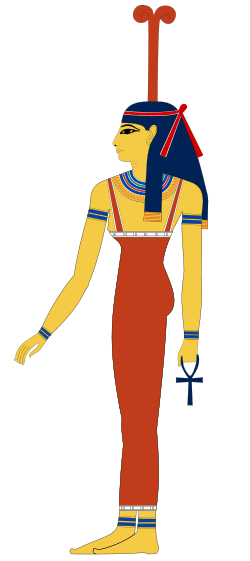| Meskhenet | |||||||
|---|---|---|---|---|---|---|---|
 Meskhenet as a woman with a symbolic cow's uterus (Peseshkef) on her head | |||||||
| Name in hieroglyphs | |||||||
| Symbol | Cow's uterus | ||||||
In ancient Egyptian mythology, Meskhenet, (also spelt Mesenet, Meskhent, and Meshkent) was the goddess of childbirth, and the creator of each child's Ka, a part of their soul, which she breathed into them at the moment of birth. She was worshipped from the earliest of times by Egyptians.





